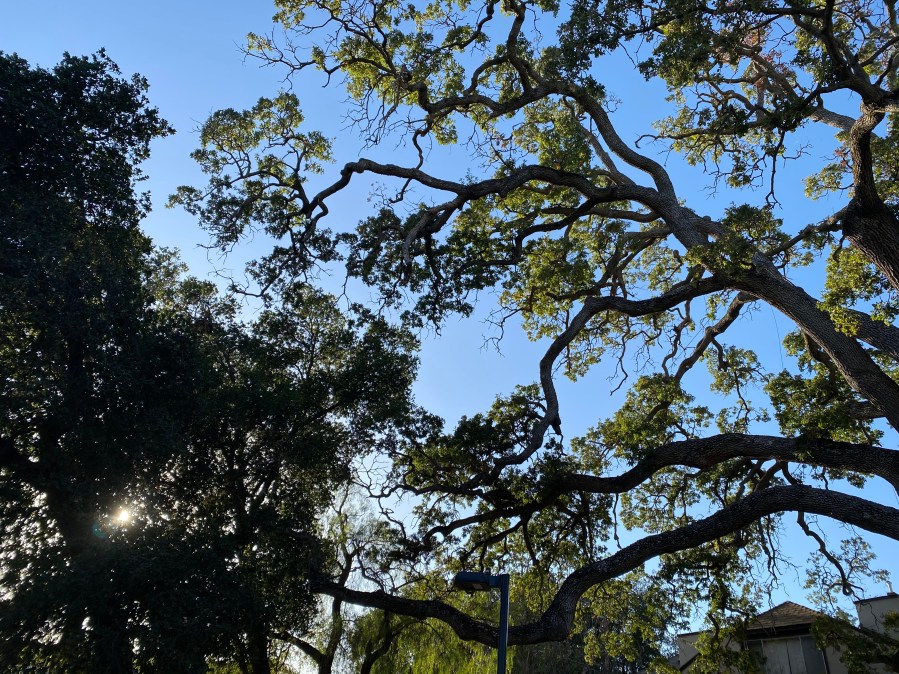AUSTIN (KXAN) — Central Texas is coming off our hottest and driest stretch of the year. Even as we’re entering a cooler and wetter period, your trees may be stressed from that 12 day triple digit stretch from mid-August.
KXAN Chief Meteorologist Nick Bannin spoke with Will Johnston from Davey Tree in South Austin about signs of stress in your trees, and which types of trees are most at risk.
KXAN Chief Meteorologist Nick Bannin: I know we’re cooler now, we’re wetter now, of course, but we had that period of very hot weather in the middle of summer. What did that do to our trees here in Central Texas?
Will Johnston, Davey Tree: Well, trees, just like us, really don’t like the heat, especially that 100 degree weather we had. But unlike us, they can’t go inside and soak up the AC. The main thing that affects trees is water loss. Water is really important to pretty much any function a tree has. So, less water means a decline in overall health, less growth, more vulnerable to biological attack and things like that.
Bannin: So, what are the signs that your tree in your own backyard and your neighbor’s yard may be suffering from either heat stress or drought stresses?
Johnston: You know, depending on the species, you can get a lot of different signs. But as far as a general thing to look out for is thinning in canopy, yellowing in leaves. If you start to see the tips of the leaves brown and come inward, that’s another good sign of drought stress, drooping in the limbs and just overall kind of sad looking trees.
Bannin: No one wants a sad tree, right? What trees here in Central Texas are most at risk from the type of heat and periods of drought that we’ve been having here this year?
Johnston: I’d say, in my experience, the three trees that are the most at risk are going to be your red oaks, magnolias, and, believe it or not, post oaks.
Bannin: And then some non native trees that we may be bringing in from other areas, just because they look nice?
Johnston: Absolutely, ornamental trees are great and pretty trees, but you know, they’re not from Texas, and things are a little tough around here, so they don’t always hold up as well.
Bannin: So let’s say you’ve got one of those trees and it’s not doing so well. How can you help it bounce back? And how can you prevent the tree damage in the future, for future rounds of heat and dry weather?
Johnston: Obviously the best thing to do is to water a tree when you’re in drought or there’s heat stress. As far as trying to prevent that stuff; the best thing to do to help a tree handle a drought is to get it prepared ahead of time, like studying for a test. Consider some are the biggest tests for a tree in Texas, watering ahead of time, adding compost to the soil, putting a nice two inch layer of mulch around the base of the tree, just to hold more moisture in the soil and prevent the sun’s rays from really cooking the soil temperatures and the fine roots beneath, are great things you can do.
Bannin: And lastly, many people have let their trees go this summer….is summer a bad time to do the trimming? Obviously, you don’t want to get oak wilt and the problems that can happen when you trim a tree in the wrong type of year and the wrong type of way…
Johnston: So as far as pruning trees in the summer on your oaks, they’re of specific concern, because we want to prevent the spread of oak wilt. What I would tell you is oak wilt is active from February all the way until June, so trying to limit major pruning during that time is always a good practice. But if you have to, find a reputable company like Davey Tree, we follow all of the oak wilt precautions. We paint our wounds, sanitize our tools, and generally, just try to prevent the spread of oak wilt. What I would say is, when temperatures are really high and they’re 100 degrees and up, and you haven’t had rain in two weeks or more, try to limit any major pruning. If you want to take off a giant limb, save it for the fall or the winter. But if you’ve got hazardous limbs, limbs resting on your house or just small canopy thinning, it’s just fine to do during the summer. My rule of thumb is, don’t take off more than 25% of the green leaves during the summer heat.
